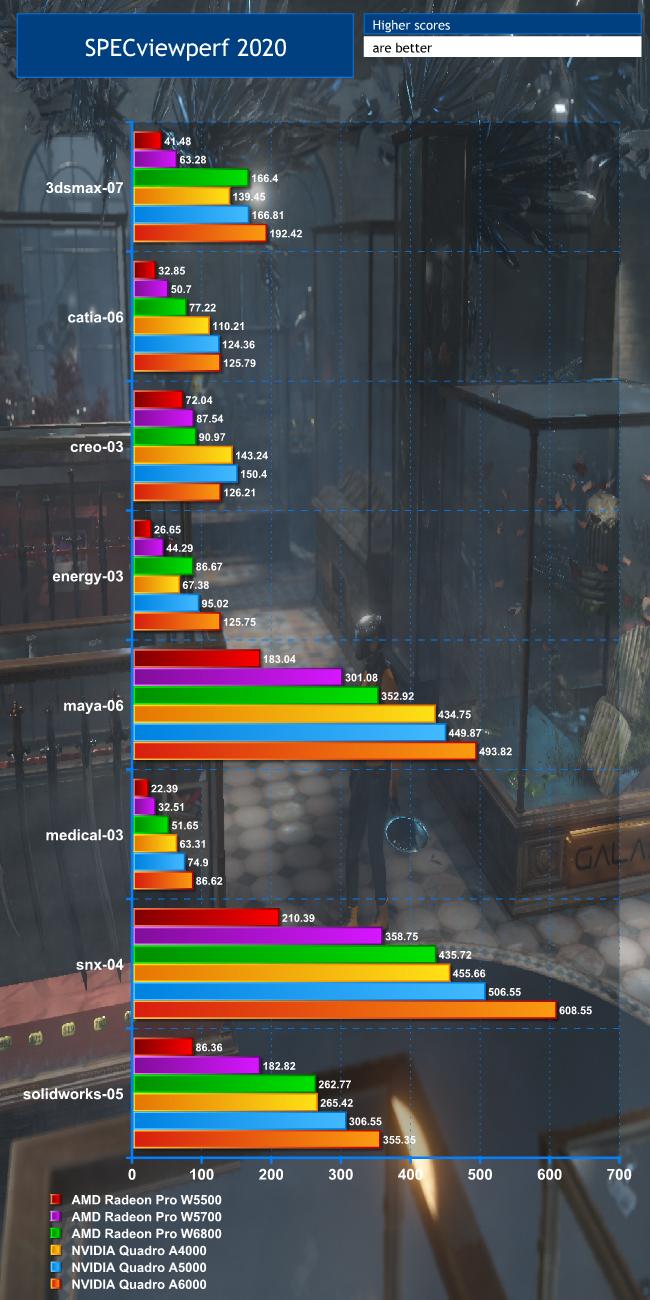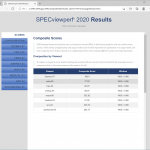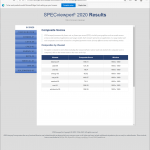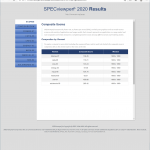SPECviewperf 2020
The SPECviewperf® 2020 benchmark, released on October 14, 2020, is the worldwide standard for measuring graphics performance based on professional applications. The benchmark measures the 3D graphics performance of systems running under the OpenGL and Direct X application programming interfaces. The benchmark’s workloads, called viewsets, represent graphics content and behaviour from actual applications, without the need to install the applications themselves.
Major updates in SPECviewperf 2020 include:
- New viewsets taken from traces of the latest versions of 3ds Max, Catia, Maya, and Solidworks applications.
- Updated models in the viewsets based on 3ds Max, Catia, Creo, Solidworks, and real-world medical applications.
- Support within all viewsets for both 2K and 4K resolution displays.
- User interface improvements, including better interrogation and assessment of underlying hardware, clickable thumbnails of screen grabs, and a new results manager.
- Support for running the benchmark using command-line options.
Although professional graphics cards are increasingly being employed for tasks other than real-time 3D viewport acceleration, this is still their “meat and potatoes”, so the SPECviewperf 2020 test is the fundamental assessment to run.
The W6800 is significantly faster than the W5500 and W5700 in every test.
However, while it is 19 per cent faster than the NVIDIA Quadro RTX A4000 in the 3dsmax-07 viewset, the A5000 matches it and the A6000 is 16 per cent faster still.
The catia-06 viewset gives the NVIDIA cards a clear lead, with the A4000 beating the W6800 by 43 per cent, the A5000 by 61 per cent, and the A6000 by 63 per cent.
The deficit continues with the creo-03 viewset, where the Quadro RTX A4000 is 57 per cent faster and the A5000 is 65 per cent faster. However, the A6000 was strangely only 39 per cent faster.
The energy-03 viewset was a bit more positive for AMD, with the W6800 beating the A4000 by 29 per cent. The energy-02 viewset is based OpendTect seismic visualisation, so is aimed at applications like oil and gas prospecting. The A5000 only beat the W6800 by 10 per cent, and the A6000 by 45 per cent.
The maya-06 viewset was back to NVIDIA dominance, with the A4000 beating the W6800 by 23 per cent, the A5000 by 27 per cent, and the A6000 by 40 per cent.
With medical-03 the A4000 beats the W6800 by 23 per cent, the A5000 beats it by 45 per cent, and the A6000 beats it by 68 per cent. This viewset simulates activities such as MRI scanner outputs.
The snx-04 viewset is based on Siemens NX, which is a very popular product design and engineering application. The W6800 is a bit closer to NVIDIA here. The A4000 only wins by 5 per cent, the A5000 by 16 per cent, and the A6000 by 40 per cent.
Results were similar with solidworks-05, which is also based on CAD software used frequently for product design. The A4000 was only 1 per cent faster than the W6800, but the A5000 was 17 per cent quicker, and the A6000 was 35 per cent faster.
In other words, this is a comprehensive win for NVIDIA. Only with 3ds Max and the energy-03 viewset does the AMD Radeon Pro W6800 beat any of the latest Ampere-generation Quadro RTX cards, and even then it's the A4000 that is in a lower price band. The AMD Radeon Pro W6800 really needed to be competing strongly with the A5000, and it clearly doesn't. However, one area where AMD has argued its cards do beat NVIDIA's is multitasking. Now that AMD workstations can sport up to 64 cores (our test rig had 32), it is clearly valuable to do something like rendering in the background but still be able to perform design work simultaneously. So next we turn to a test of this capability.
Be sure to check out our sponsors store EKWB here
 KitGuru KitGuru.net – Tech News | Hardware News | Hardware Reviews | IOS | Mobile | Gaming | Graphics Cards
KitGuru KitGuru.net – Tech News | Hardware News | Hardware Reviews | IOS | Mobile | Gaming | Graphics Cards







